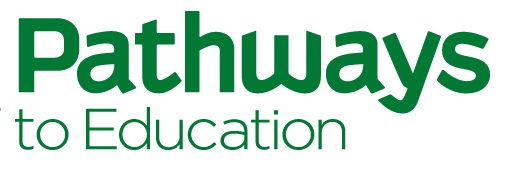Since the beginning of the pandemic, Pathways Program locations across the country have been working hard to ensure Pathways students are equipped with the tools to recover from two years of education disruptions.
Learning loss and personal well-being have been and continue to be top of mind concerns. Studies from around the world have suggested that youth may be behind academically by up to six months because of school closures, with students from disadvantaged backgrounds experiencing more severe setbacks. The learning gap between low-income and high-income households is increasing because the pandemic has exacerbated inequities—for example, low-income households are unable to afford out-of-school academic or social programs that help increase the academic achievement and perseverance of youth.
Mental health and well-being have become an increasing concern for youth throughout the pandemic. Statistics Canada reported that 64 per cent of respondents aged 15 to 24 experienced a decrease in mental health because of COVID-19 restrictions, with 41 per cent of participants from the same age group outlining symptoms of anxiety that were moderate to severe. Additionally, youth who were living in COVID-19 hotspots often had symptoms of depression and anxiety due to increased concerns about becoming infected.
Some of the challenges students from low-income communities have faced during the pandemic go beyond school. Businesses most impacted by the pandemic, such as retail stores and restaurants, offer job opportunities to students who may need to contribute to household expenses and/or are saving for their futures. The loss of these jobs over the past two years may have impacted decisions made by young people who may use them to help cover costs associated with post-secondary education. Similarly, paid opportunities and volunteer experiences, which build skills, social capital, and contribute to young people supporting themselves, have been largely put on hold. Losing these opportunities to build connections and skills has impacted young people, especially those with already limited networks, as they transition into the workforce.
How we have been helping students prepare for the challenges ahead
Since the start of the pandemic, Pathways Program locations have offered increased one-on-one supports for students. For example, program staff at Pathways Rexdale created ‘Individual Action Plans’ for students, ensuring they receive the academic supports they need to stay on track with their studies, while Pathways Winnipeg organized a ‘summer school’ to assess students’ academic standing as they begin a new school year.
A key focus of the Pathways Program is making students feel the presence of supportive individuals around them, helping to positively impact academic achievement and their sense of well-being. With each student getting personalized support from a Pathways staff member, the program ensures that all students have a trusting adult they can turn to outside of their immediate family. This has been especially useful in helping students cope with the daily stresses of the pandemic, giving them a strong sense of connection and affirmation. In addition, Pathways staff across the country have run various activities to inspire youth and help them feel connected to one another and their community.
In response to the pandemic impacting opportunities after high school, program staff have been focused on ensuring students have access to mentors who can provide career guidance and advice. During the pandemic, staff organized virtual career fairs, information sessions on post-secondary options, and workshops on topics such as scholarship applications and changes to the world of work due to the pandemic. Furthermore, Pathways tutors and mentors are professionals in various fields. During the pandemic, they continued to provide students with valuable industry knowledge and give them opportunities to build their professional networks as they prepare to transition to the workplace.
We know that the ongoing reopening of schools is not enough to get students back on track—students in situations of disadvantage will need personalized, ongoing support that addresses the lingering negative impacts of COVID-19. That is precisely the support that the Pathways Program is well suited to provide. Relationships with students, parents, and the community at large, together with the learnings of the past two years, have allowed Pathways Program locations to plan engaging, high-quality programming that will keep students connected to their learning, despite the continuing challenges of the pandemic. Whatever happens in years to come, we are determined to close the gap between Pathways students and their education.
